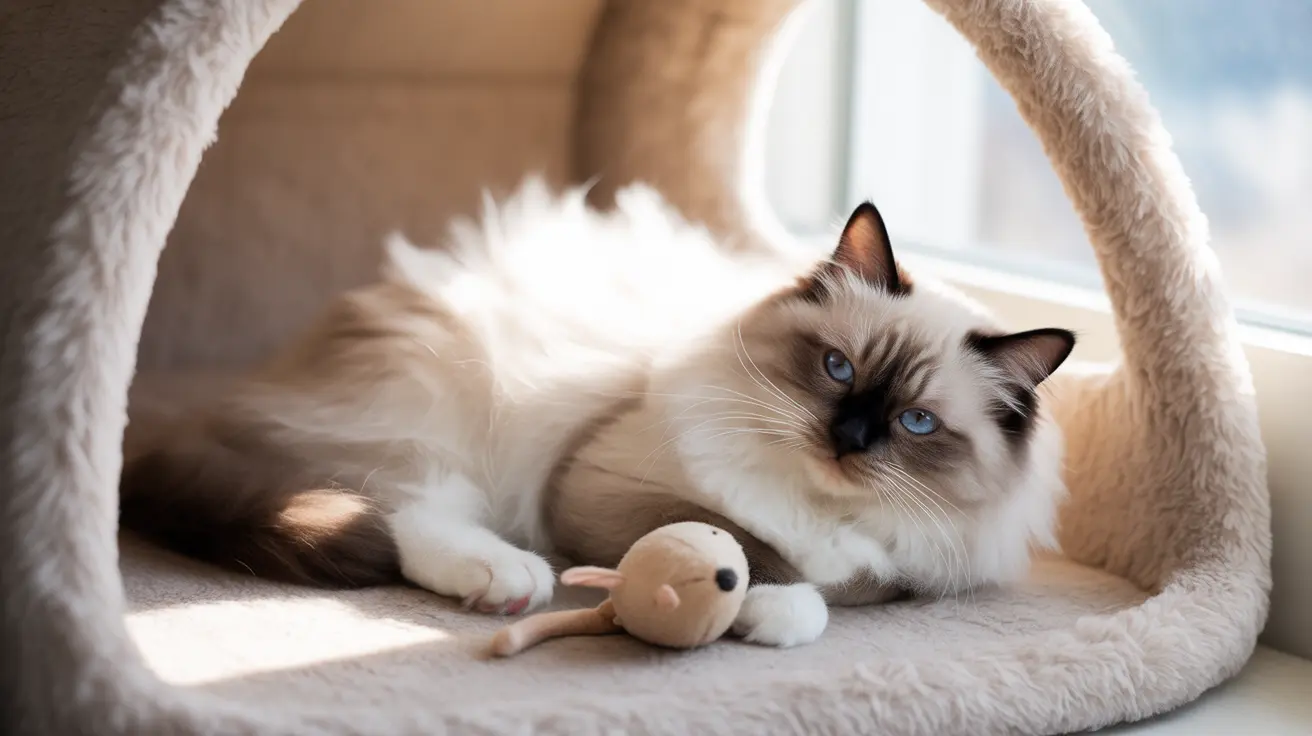Introduction
Traveling with cats can be stressful for both pets and their owners. Whether you're planning a long car journey or preparing for air travel, knowing how to make a cat sleep or stay calm during the trip is crucial for their safety and comfort. This comprehensive guide explores veterinary-approved methods, from natural solutions to prescribed medications, helping you make informed decisions about your cat's travel needs.
While sedation isn't always necessary, understanding your options can help ensure a smoother journey for everyone involved. Let's explore the safest and most effective approaches to managing your cat's travel anxiety.
Understanding When Sleep Aids Are Necessary
Not every cat requires intervention to stay calm during travel. However, certain signs indicate your cat might benefit from sleep aids or sedation:
- Extreme vocalization or persistent meowing
- Physical symptoms like excessive drooling or panting
- Aggressive behavior or escape attempts
- Severe stress-induced vomiting or elimination
It's essential to recognize these signs early and consult with your veterinarian before considering any form of sedation.
Natural Calming Solutions
Pheromone Products and Supplements
Before turning to medication, consider these natural alternatives:
- Feliway spray or wipes (apply 30 minutes before travel)
- Natural supplements containing L-theanine
- Calming treats specifically formulated for cats
- Hemp-based products (veterinary-approved only)
Environmental Modifications
Creating a comfortable travel environment can significantly reduce anxiety:
- Use a carrier with familiar bedding
- Cover the carrier with a light blanket
- Maintain consistent temperature
- Keep the environment quiet and calm
Veterinary-Prescribed Options
When natural methods aren't sufficient, your veterinarian might recommend:
- Gabapentin: A common choice for mild to moderate anxiety
- Trazodone: Effective for reducing stress without heavy sedation
- Acepromazine: Reserved for cases requiring deeper calming effects
These medications should only be used under veterinary supervision and after a thorough health assessment.
Pre-Travel Preparation Tips
Proper preparation can significantly impact your cat's travel experience:
- Test any prescribed medications before the actual travel day
- Practice with short car rides
- Gradually acclimate your cat to their carrier
- Schedule feeding appropriately (usually 4-6 hours before travel)
- Ensure proper identification and documentation
Safety Considerations
Always keep these safety factors in mind:
- Never use human medications without veterinary approval
- Monitor your cat closely if using any form of sedation
- Have emergency veterinary contacts available
- Consider your cat's age and health status
- Avoid sedation for air travel unless specifically prescribed
Frequently Asked Questions
How can I safely make my cat sleep or stay calm during travel without sedation?
Focus on natural methods like pheromone products, creating a comfortable carrier environment, and gradually acclimating your cat to travel. Use familiar bedding, maintain a quiet atmosphere, and consider veterinary-approved calming supplements.
When is it appropriate to use veterinarian-prescribed sedatives for cat travel anxiety?
Sedatives are appropriate when your cat shows severe anxiety symptoms that don't respond to natural calming methods. Always consult your veterinarian first, as they'll evaluate your cat's health and recommend suitable options.
What are the risks of sedating my cat before a car ride or flight?
Risks include respiratory depression, coordination problems, and potential complications from underlying health conditions. Some cats may experience paradoxical excitement or increased anxiety. This is why professional veterinary guidance is essential.
Which natural products or behavioral techniques can help reduce my cat's travel stress?
Effective options include Feliway pheromone products, carrier training with positive reinforcement, gradual exposure to car rides, and maintaining familiar scents and items in the carrier.
How should I prepare my cat and the carrier to minimize anxiety before and during travel?
Make the carrier a positive space by placing treats and familiar items inside. Start preparation weeks before travel, use calming products as directed, and ensure the carrier is secure and comfortable. Feed several hours before departure and maintain regular routines as much as possible.
Conclusion
While making your cat sleep during travel might seem like an ideal solution, focusing on anxiety reduction and comfort is often more effective and safer. Start with natural methods and behavioral modifications, consulting your veterinarian if these prove insufficient. Remember that each cat is unique, so what works for one might not work for another.






